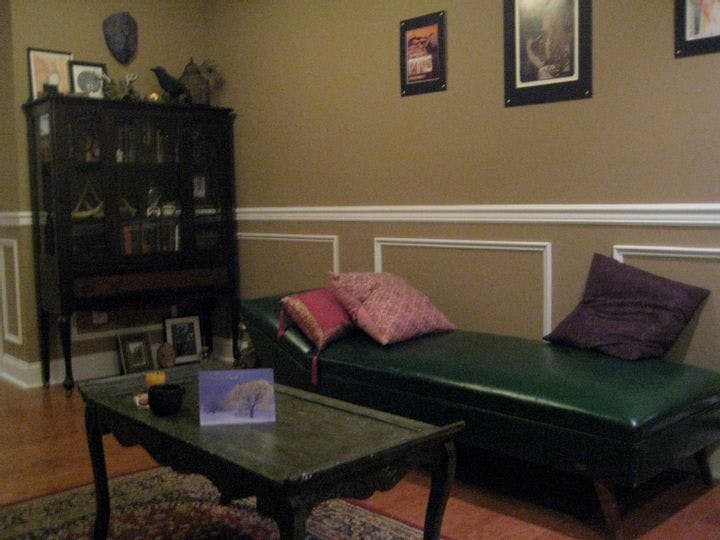Fall 2008
America on the Couch
– Charles Barber
Charles Barber finds American Therapy "thoroughly researched and elegantly organized," but says it does not quite capture the "fascinating dialectic" between "our exterior and interior landscapes."
Psychotherapy has been a series of generally well-intentioned attempts to throw mud against a wall to see what sticks. Over the past century, that method has told us this: Psychotherapy works. Two-thirds of patients improve within six months of starting treatment (longer treatment yields few further results). The therapist’s training and the school or philosophy of therapy in use make little difference. What does matter is the empathy level the patient perceives in the therapist, the patient’s willingness to engage in therapy, the severity of the patient’s illness to begin with, and the appropriateness of match, or treatment alliance, between patient and practitioner.
The pursuit of therapy—if not happiness—is a largely American phenomenon, Jonathan Engel tells us in American Therapy. By the 1960s, the United States had more clinical psychologists, psychiatrists, and psychiatric social workers than the rest of the world combined. “The history of psychotherapy in the United States . . . is a classic American tale of discovery, entrepreneurship, and self-promotion,” writes Engel, a professor of health care policy and management at Baruch College.
For it was in America, in the early 1900s, that Freudianism and psychoanalysis took hold as nowhere else (despite Sigmund Freud’s personal antipathy toward the United States). A therapeutic parade has followed: behaviorism (which views human beings as stimulus-response machines in which only observable, measurable behavior matters); humanistic approaches (which focus on social relationships as the key to wellness); cognitive therapy (which posits that thinking and beliefs drive our behavior and emotions); populist self-help programs such as Alcoholics Anonymous and Narcotics Anonymous; the largely 1960s-vintage therapies such as electroshock, transcendental meditation, and primal scream (the latter favored, briefly, by John Lennon and Yoko Ono); and so on.
There appears to be some truth to the notion that sick souls have a particular insight into what can make us well.
Engel writes, but does not write enough, about the characters who invented these various approaches. These doctors and visionaries were typically brilliant—and many were famously troubled. The humanist Harry Stack Sullivan (whom novelist Walker Percy called perhaps America’s greatest psychiatrist), for example, championed the importance of social relations, but was alcoholic, depressed, and misanthropic. There does appear to be some truth to the notion that sick souls, such as the great early psychologist William James, have a particular insight into what can make us well. (Among the exceptions is midwesterner William Menninger, hugely influential in raising psychiatry’s profile and credibility during and after World War II, who appears to have been a particularly sanguine character.)
Psychotherapy’s progress did not come without much confusion and excess, and even cruelty—lobotomies, excessive use of electroshock therapy, and charlatanry. A 1970s study by the California State Psychological Association found that more than five percent of male psychologists had had sex with female patients, some claiming that intercourse was a bona fide therapeutic technique. Today, such excesses have diminished. In recent decades, the profession for the first time has exposed itself to the light of day by objectively examining its actual clinical outcomes, producing what could be called a rational approach to psychotherapy. Good therapists these days are schooled in a variety of techniques and can deploy, with a fair degree of certainty, the appropriate approach for the individual patient.
American Therapy is a thoroughly researched and elegantly organized survey of therapy on America’s historical landscape. It is a commendable effort and would make a fine ancillary text for introductory psychology courses. But therein lies the problem. Engel’s assertion that the rise of psychotherapy is a uniquely American story—one that suits our nation’s varying sensibilities of optimism, pragmatism, and reinvention—is absolutely true. Each school of therapy has reflected the particular preoccupations of the era in which it was invented: Behaviorism and cognitive approaches came of age in the rational 1950s, self-help and self-exploratory journeys in the trippy ’60s, self-esteem interventions in the battered ’70s. Since the ’80s, we have seen the rise of approaches (and psychiatric medications, that new adjunct of—or replacement for—psychotherapy) designed to help us function in increasingly competitive economic times. Engel’s narrative does not do justice to the fascinating dialectic (or the stimulus-response, if you will) between our exterior and interior landscapes.
But Engel does show that throughout this long, strange trip, psychotherapy has truly mattered in America. Has it served as an antidote to American individualism? Have we used it to refute F. Scott Fitzgerald’s assertion that there are no second acts in American lives? Who knows. What we can conclude from American Therapy is a truth more universal than it is American: There has always been something unutterably and mysteriously healing about the unburdening of one’s soul to another person.
* * *
Charles Barber, a lecturer in psychiatry at the Yale University School of Medicine, is the author of Comfortably Numb: How Psychiatry Is Medicating a Nation, published earlier this year, and Songs From the Black Chair: A Memoir of Mental Interiors.
Reviewed: American Therapy: The Rise of Psychotherapy in the United States by Jonathan Engel, Gotham, 352 pp, 2009.
Photo courtesy of Flickr/theearlofgrey
